Most Probable Explanation (9.0)
Context
Analysis | Visual | Most Probable Explanation
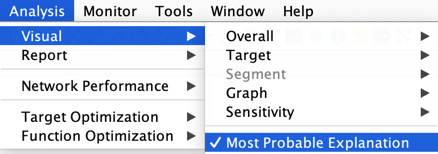
The Most Probable Explanation (MPE) (also called Maximum A Posteriori (MAP) assignment) corresponds to the fully instantiated particle that has the highest probability. In other words, if we think about the Joint Probability Distribution as a hypercube, this is the cell with the highest probability.

The cube below represents the Joint Probability Distribution of the domain defined by this network, 12 unique events (2 x 2 x 3).
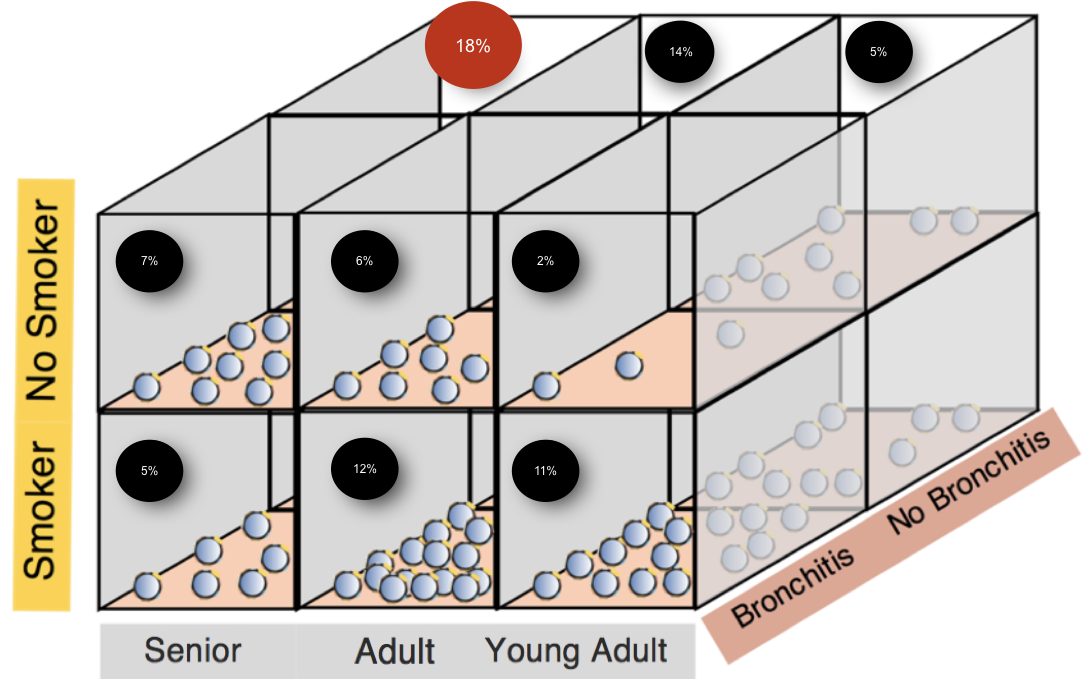
These joint probabilities sum to 100%. The probability highlighted in red indicates the (marginal) MPE. Seniors who do not smoke and do not have bronchitis represent 18% of the overall population modeled with this network.
The tool that allows you to compute the MPE in BayesiaLab is an Inference Mode. In this mode, the Monitors no longer show probabilities, but rather the factor by which the MPE probability would be reduced if we were to set the corresponding evidence. The 100% states then belong to the current MPE.

The probability of the current MPE is shown in the upper part of the Monitor Pane.
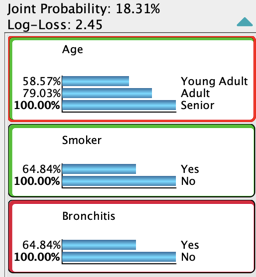
The table below represents the Joint Probability Distribution defined by our network.
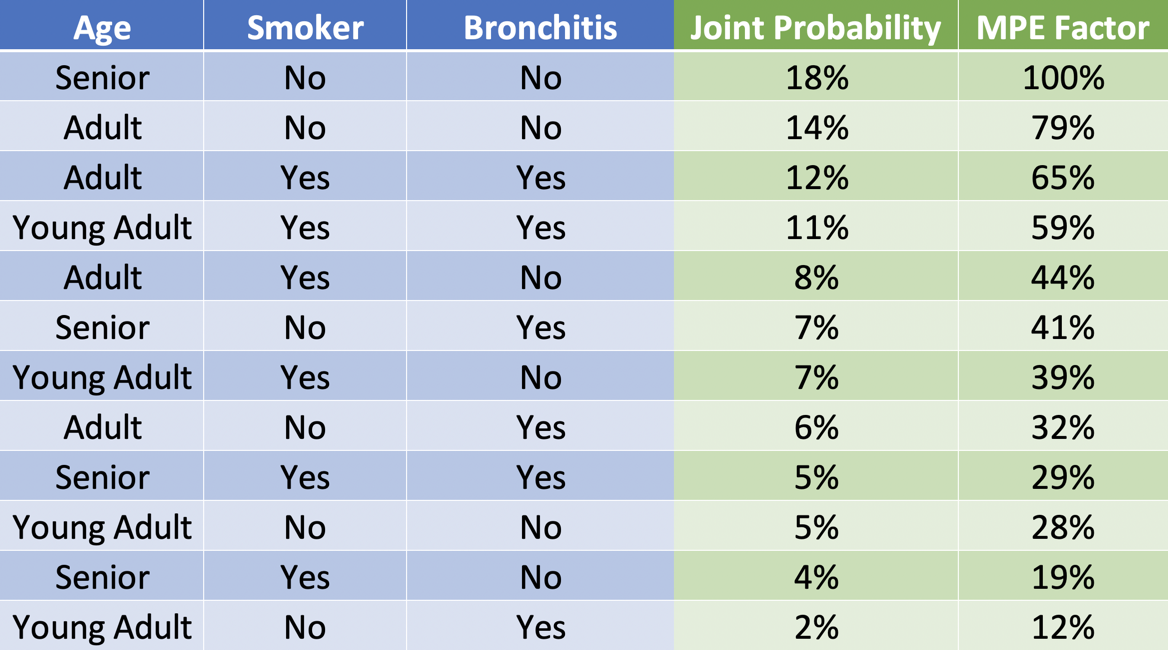
The MPE mode is interactive. All monitors are updated when evidence is set. For example, when we set Age=Young Adult, this reduces the joint probability by 59%, and the new conditional MPE corresponds to smokers that have bronchitis.
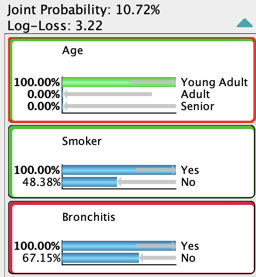
The MPE is sometimes counter-intuitive because it does not necessarily correspond to the marginally most likely state of each variable.
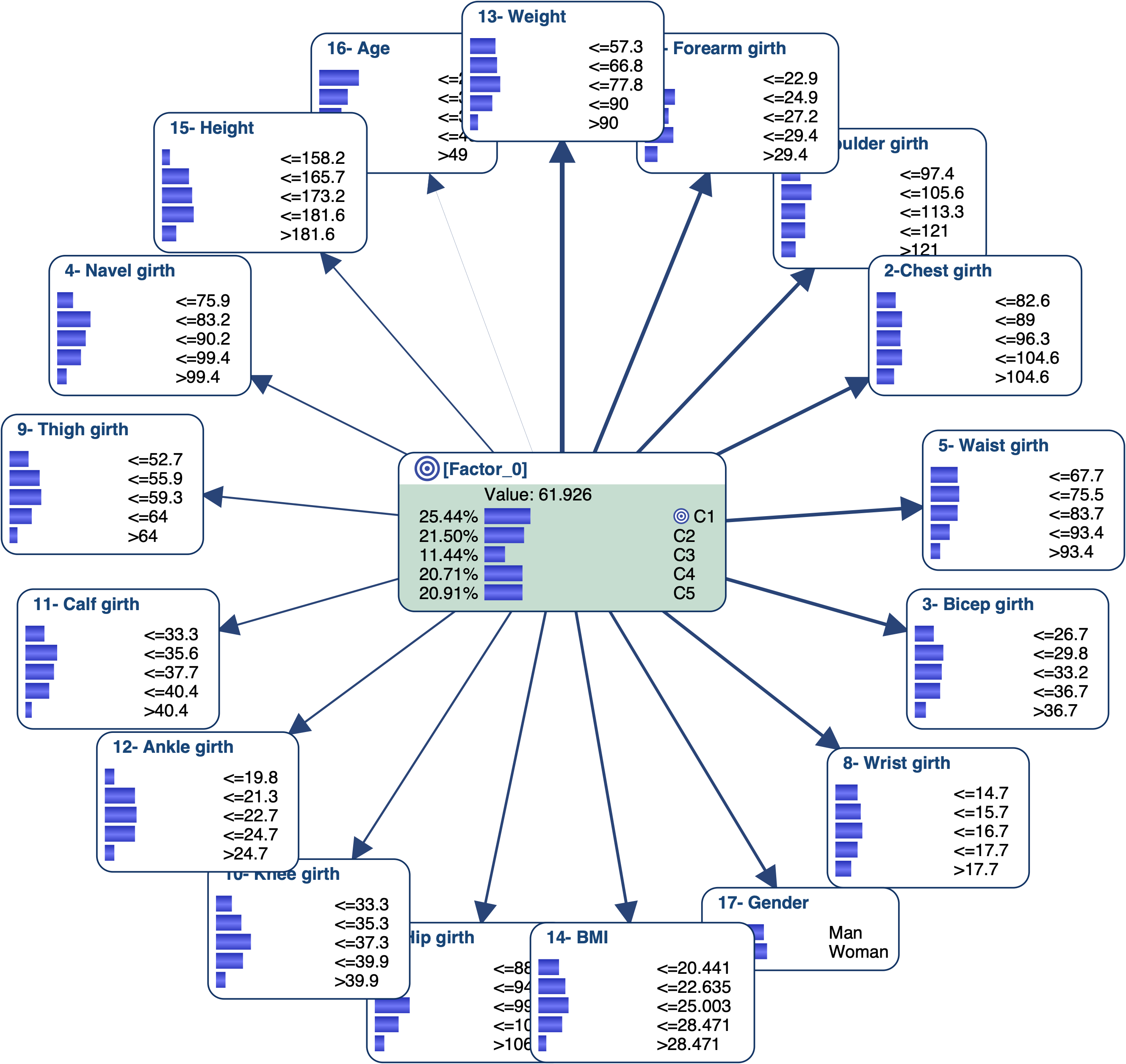
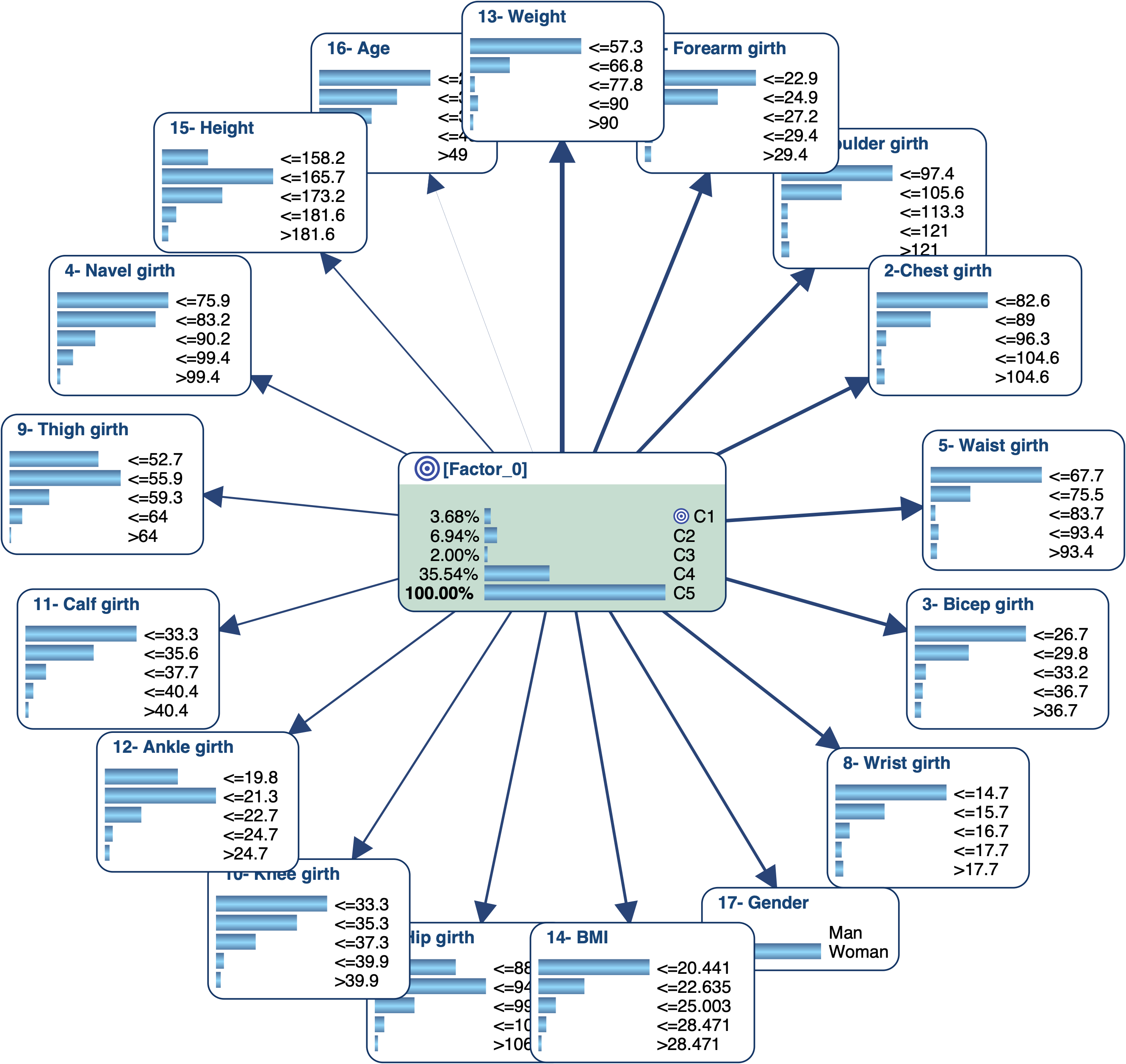
Remember that the MPE returns a fully instantiated particle. This means that all nodes are instantiated, i.e. all dimensions of the domain have exactly the same weight. Adding irrelevant dimensions, or redundant dimensions, can therefore have an impact on the result.
Returning partially instantiated particles is much more computationally expensive. This is the case with the Maximum A Posteriori (MAP)-MAP>) (also called Marginal MAP), which returns the most likely set of particles defined on a subset of variables, given the current set of evidence (which can be empty).
This is also the case with the Most Relevant Explanations (MRE), a tool we introduced in version 9.0 to search for precise and concise explanations for your current set of evidence.
New Feature: MPE Instantiation
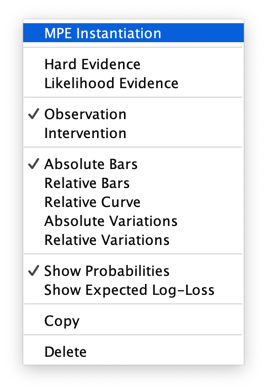
As of version 9.0, a right-click on the Monitor allows to instantiate the MPE, i.e. set the evidence on the 100% state. Since this feature is available via the Monitor Contextual menu, it works on the selected monitors only.
